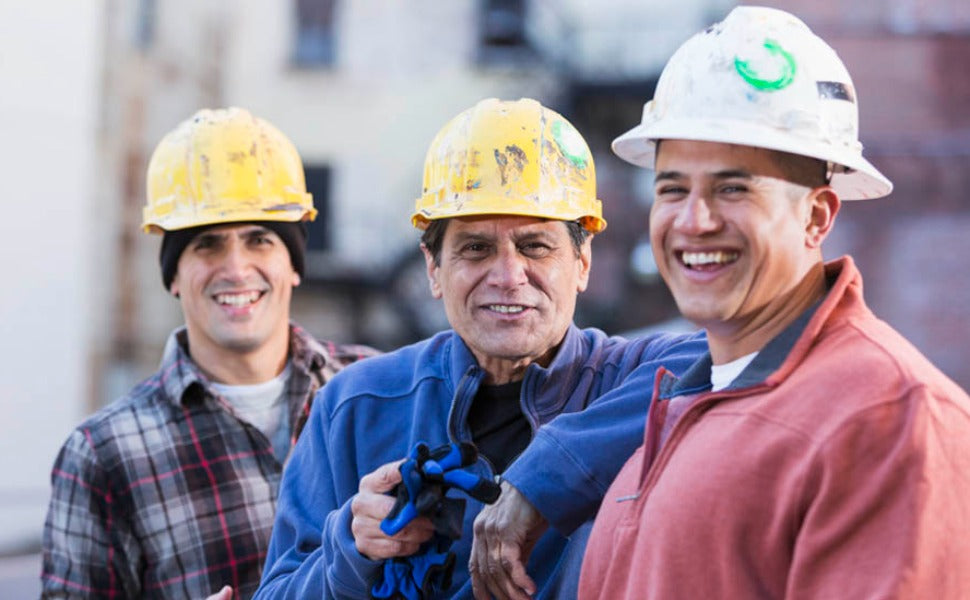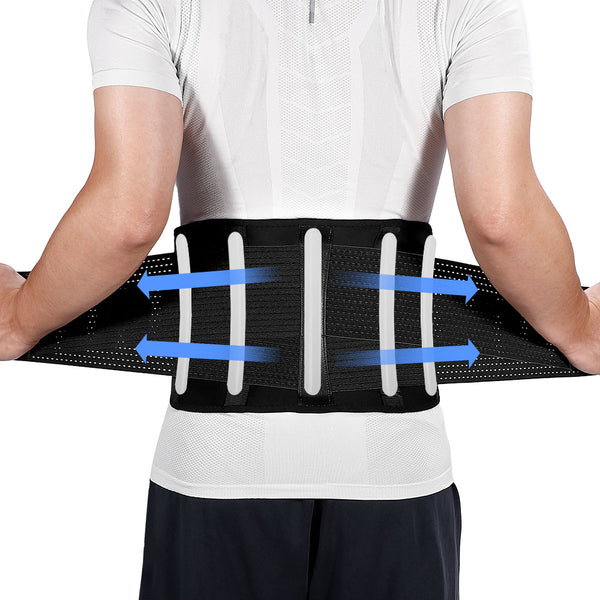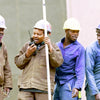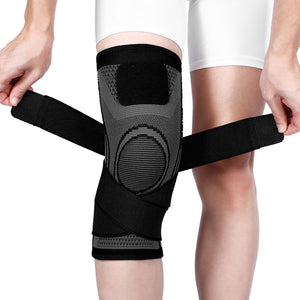Is It Ok to Wear a Workers Back Brace for 8 Hours

can provide support during high-intensity work but is not recommended for all-day wear. It's best to use a brace when lifting heavy objects or standing for long periods, and to loosen it during breaks to prevent muscle dependency and restricted blood flow.
Benefits Explained
Applications of the Fivali lumbar support brace also include occupational safety and labor protection against industrials related to physical labor: construction, warehousing, logistics, and manufacturing. The main purpose of a back brace is to provide additional support to the spine, intervertebral discs, and core muscles while reducing the load on the back muscles and risk of injury. In general, the back brace limits excessive spinal flexion and rotation, consequently avoiding back injuries due to poor posture or overexertion. This design helps reduce pressure on intervertebral discs among workers who usually have to bend over or lift heavy loads, redistributes the pressure for dispersion of the load to alleviate muscle and spinal fatigue.
This support function of the back brace can also help many workers who suffer from chronic back pain or lumbar disc herniation to provide an "external support" force for maintaining spinal stability. For workers with old lumbar injuries, braces can avoid recurrences of injury to the lumbar region while working and hence act as a preventive and protective device.
Overdependence on a back brace does have some potential disadvantages. In the long run, it can make the core muscular group lazy, since the strength and stability to be built up within this area might gradually decline. Workers who depend on back braces will know that their back muscles lack support after stopping continuous use of them, therefore the spine may be more vulnerable in different instances. Therefore, though back braces are a big help in many ways in the short term and under specific working conditions, scientific and reasonable use shall be developed to avoid long-term dependence.
Types to Choose
The support level and types that back braces have vary, and hence workers should base their choices on work intensity, specific type of job, and status of back health. They are mainly categorized into three types: low-support braces, medium-support braces, and high-support braces.
-
Low Support: Suitable for people with lighter work daily, office workers, and those working in lighter manual labor. Low-support braces are usually made from elastic materials. These are mainly used to perform the basic posture correction and provide some help. These braces will keep a larger range of motion, helping the back muscles maintain a rather natural physiological curve when sitting or standing for a long time. This helps to avoid chronic pain due to incorrect postures, such as slouching or leaning.
-
Medium Support: This would then be indicated for a moderate-intensity laborer: one who works in the warehouse, on an assembly line, or even as a courier. Stronger support materials, such as reinforced nylon or even support stays, are common features of medium-support braces to offer to take pressure off the spine for workers who have to bend and lift often. Many of them have straps that are adjustable; hence, a wearer would regulate the level of support according to one's demand to provide stability to the spine without hindrance to movement.
-
High Support: These braces provide maximum support and are targeted at workers whose tasks involve heavy lifting or very high-intensity physical work. Most construction workers and people who handle heavy objects make use of such braces. Generally, high-support braces make use of metallic stays or other rigid materials with a greater coverage area so that comprehensive support and protection can be given to the waist and lower back, which helps workers avoid vertebral misalignment or joint sprains under high-intensity loads.
A worker should consider the nature and intensity of work when choosing a back brace for comfort. Material selection should be those that have good breathability to avoid stuffiness during long wear. Some braces come with a combination of waist and shoulder straps that increase the stability of the brace and prevent sliding when one bends or lifts. Some of them also have extra adjustable straps in order to accommodate workers of different body sizes and heights.

Proper Fit Guide
It is absolutely necessary that a back brace provides its protective effect for workers by being worn properly. The brace should be fitted well around the waist and the main support area of the back, providing stable protection without being too tight to restrict blood circulation or breathing.
Workers should check that the brace . A small-sized brace would put pressure on the abdomen and back; it may affect breathing and blood circulation, leading to discomfort or even numbness of the limbs. A much larger one will not provide very stable support to the spine and protection. When purchasing, one is usually able to refer to waist and back length to select the right size; some brands include a size chart for selection.
When donning, secure the brace around the waist by placing the supportive stays with the lumbar region, which is usually the area that bears the most load. Adjust the tightness to personal comfort. After putting on, the back support shall be stable, but there shall be enough room for movement. As for those braces that require shoulder straps, they should hang loosely - not too tight or too loose - to impede the movement of the shoulders or cause pressure.
Workers should wear the brace in the right posture. When standing, the brace should have kept the spine in neutral alignment, and it has to support the back. They should avoid hunching over and bending over. The dry skin at the back is very important when putting on the brace; this will prevent the skin from redness or discomfort due to a long period of contact with the brace.
Safety Tips
, yet there are some crucial precautions in its daily use. The brace should not be worn throughout the day if no support is needed. Long-term wearing may weaken the strength of core muscles little by little and hence cause muscle atrophy. Therefore, in high-load physical labor, it is rational to wear the brace, while during lower-intensity work or in situations that require flexibility, one can take off the brace to maintain the natural strength of the back.
Good lifting techniques and proper posture are still required, even if a brace is worn. It is still important for workers, even with the support of the brace, to observe the standard mechanical principles when lifting heavy objects: bending at the knees, keeping the back straight, and avoiding twisting of the spine to maintain stability and risk the least injury. A back brace could be used to help serve as auxiliary protection but cannot entirely replace good habits of posture.
The tightness of the brace also needs attention. Workers must avoid putting on the brace too tightly to avoid restriction of blood flow or pressure on internal organs. Concededly, in hot environments, the prolonged wear may result in excessive sweating; hence, workers should keep up their water level. It is recommended that workers drink water regularly during work and loosen the brace moderately during breaks to relieve tension on the back.
Workers who encounter the development of pain, skin irritation, or any other reaction when they wear the brace should immediately discontinue using the brace and seek attention from a medical physician. Application of the brace among people affected by chronic back conditions or spinal diseases should be based on the prescription of a doctor to avoid exacerbation of symptoms and development of new health complications during the period of use.
When to Avoid
While there are quite a number of positive features concerning back braces, not every situation calls for wearing them. In workers who do not undertake heavy physical work or show no visible signs of back problems, wearing such a brace would actually do more harm than good. Long-term reliance on a back brace will suppress the functioning of core muscles; this weakens the strength of muscles and hence makes the spine susceptible to external forces.
In some instances of medical disorders, the application of a back brace proves to be detrimental to the condition. Workers with acute disc herniation will exacerbate the pain or cause other complications if the worn brace is too tight or misplaced to further compress the nerve root. Hence, for spinal disorders or any other back diseases, the bracing action should always be one of caution and upon the advice of a physician.
The constant friction of the brace can, in some cases, lead to local skin injuries or allergic reactions in workers with sensitive skin or a skin condition. In the case of redness, itching, or any other discomfort on the skin, it is advisable to reduce the number of hours worn or change to a soft and highly breathable material of brace.
Common Misconceptions
Some common misconceptions when using a back brace: Wearing the brace can completely avoid back pain or injuries. Actually, the brace can only serve as auxiliary support, whereas the keys to reducing the risk of back pain and injury are correct working posture and reasonable lifting techniques, along with daily muscle training. Chronic pain on the back or spinal diseases cannot be cured by the brace itself; it serves for temporary support and relief only.
Another very popular myth is that "the tighter, the better." Too many workers try to overtighten the brace for . However, it is not as good as it sounds. An overly tightened brace obstructs blood circulation, affects the mobility of the lower limbs, and can even cause difficulty breathing. A well-fitted brace should be stable and comfortable, but not restrict movement and press upon the abdomen or spine.
Some workers even believe that after putting on the brace, they can lift heavy objects or do any amount of high-intensity work without concern, which is also a mistaken concept. The full back brace can only offer a certain degree of support and protection but can never eradicate the inherent load of heavy physical labor imposed upon the spine. Workers should listen to keeping proper posture while wearing the brace, as well as controlling the load and frequency of lifting, so that they will avoid overexertion and all potential risks of injury.
Expert Advice
In the opinions of orthopedic physicians and physiotherapists, back braces are conditional auxiliary equipment, suitable for certain working situations and tasks. In general, doctors will suggest that workers may wear the braces while performing weight-carrying activities or doing long-standing physical work but should not wear them during low-intensity working or resting. Continued use of the brace can cause functional atrophy of back and abdominal muscles, leading to a decrease in back stability.
The physical therapists usually recommend strengthening the workers' core muscle group by doing plank and bridge exercises to enhance the spine's natural support. This will not only reduce one's dependency on the brace but also go a long way in effectively preventing and relieving back pain. In addition, good posture at work will help workers avoid bending or twisting the spine when lifting heavy objects in order to minimize the risk of back injury
-
Posted in
Back pain causes, Brace, Pain














